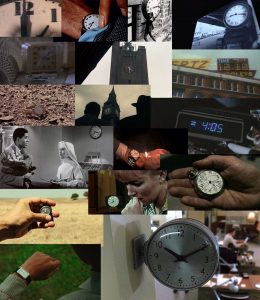How did Christian Marclay make “The Clock”? Fair use, the right to limited re-use of copyrighted material without permission or payment, permits not only more efficient work flows but also innovation. Artists are among those who understand the power of unlicensed quotation under fair use.
To celebrate Fair Use/Fair Dealing Week, CMSI is publishing excerpts from the just-released second edition Reclaiming Fair Use: How to Put Balance Back in Copyright (University of Chicago Press). Here’s one:
The Swiss-American artist Christian Marclay grounds much of his work in collage. In the 1970s, he was a pioneer of turntablism, and has spent a lot of his career with avant-garde musicians. He took to video to make “The Clock” (2010).
 It’s a video assemblage of images of time and timepieces taken from films, timed perfectly to the actual hour of the day where it is shown. It’s both art and an actual clock. Debuted in 2011 at the Venice Biennale, it is shown in museums around the world. His employment of existing work to make a new work of art was transformative, and an obvious fair use.
It’s a video assemblage of images of time and timepieces taken from films, timed perfectly to the actual hour of the day where it is shown. It’s both art and an actual clock. Debuted in 2011 at the Venice Biennale, it is shown in museums around the world. His employment of existing work to make a new work of art was transformative, and an obvious fair use.
Marclay understood his rights. Do you want to understand how to employ the U.S. copyright doctrine of fair use in digital art? The College Art Association, with facilitation from CMSI and others, has developed a Code of Best Practices in Fair Use for the Visual Arts. For more stories like this, and for a fuller background on how different creative communities have strengthened their knowledge of the law and improved their work, check out Reclaiming Fair Use, second edition.
